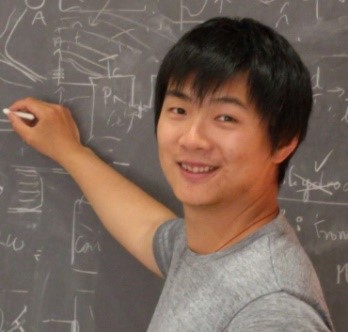
ABSTRACT: The strong distortion of electrified fluids and ejection of liquid filaments have fascinated scientists for centuries. This ubiquitous phenomenon forms the basis of several technologies including space micropropulsion devices, ink jet printing, mass spectrometry and focused ion lithography. In a seminar paper, Taylor (1964) reported that a liquid subject only to capillary and Maxwell (electrical) forces in static equilibrium must adopt a conic shape with a 98.6○ vertex angle, known as the Taylor cone. Unfortunately, the unsteady nature hidden in the conic geometry has largely been ignored. In 2001 Zubarev explained why Taylor’s solution cannot represent a true equilibrium except far from the conic vertex and that dynamic formation of conic cusp in liquid metals must evolve by self-similarity. In this talk we examine three important problems involving electrified fluid shaping and control. First, we revisit Zubarev’s analysis which erroneously predicts flow streamlines orienting parallel to the moving surface. Our theoretical analysis, supported by extensive numerical simulations, reveals the existence of a two-parameter family of non-spherically symmetric, self-similar solutions whose streamlines intercept the conic surface at an angle. These solutions reveal for the first time the existence of a number of advancing and recoiling interface shapes. This finding expands our understanding of cusp formation and introduces a new twist to many existing theories based on Taylor’s static cone. Secondly, we discuss the rich spectrum of shapes for slender film of conductive or dielectric liquid coating a curved electrode. Our model, based on the gradient flow structure derived from the Helmholtz minimum dissipation principle, offers keen insight into the complex evolution of liquid shapes, accumulation sites and flow instabilities not accessible to planar geometries. Lastly, we solve the inverse problem for the optimal electric field distribution pattern required to generate desired liquid shapes for dielectric and conducting films. Our control strategy incorporates the full nonlinear spatiotemporal behavior of the liquid interface through an efficient algorithm which yields the optimal electrode topography. Implementation of this formalism is used to generate precise 3D liquid patterns including nearly perfect square protrusions and complex heart-like shapes.
BIOSKETCH: Chengzhe Zhou first trained in science at the Shanghai Experimental School, which advocates a unique approach to education based on research-oriented instruction and scientific experimentation. After his secondary studies, he attended the St. Johnsbury Academy in Vermont for one year, where he competed in the American Regions Mathematics League with the Vermont All-Star Math team. He obtained his B.S. in Mathematics and in Physics in 2012 from the University of Rochester, where he received a number of scholastic awards. In 2013, he began his doctoral studies in Physics at Caltech, focusing on the development of novel theoretical and computational models for evolution and control of liquid interface in systems driven by external fields. His current interests are focused on small scale transport and emergent phenomena in driven nonlinear systems.
Date/Time:
Date(s) - Jul 19, 2019
10:30 am - 11:30 am
Location:
37-124 Engineering IV
420 Westwood Plaza Los Angeles CA
